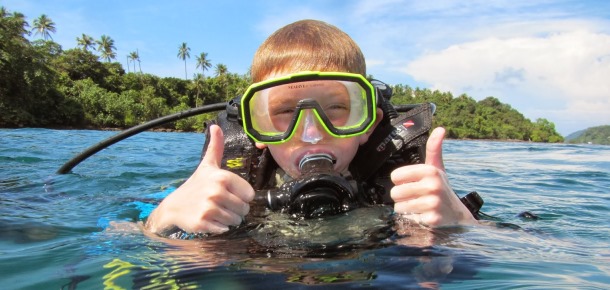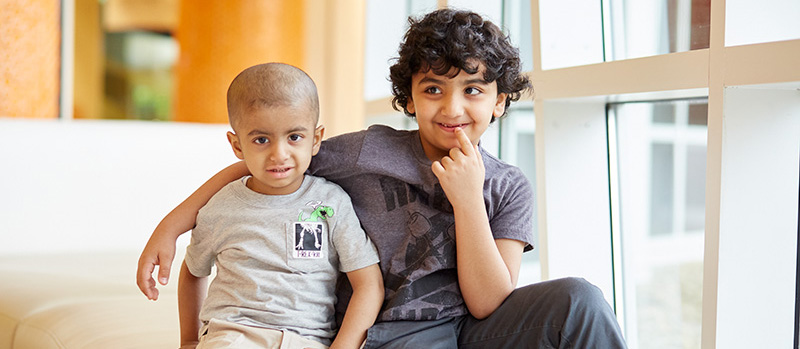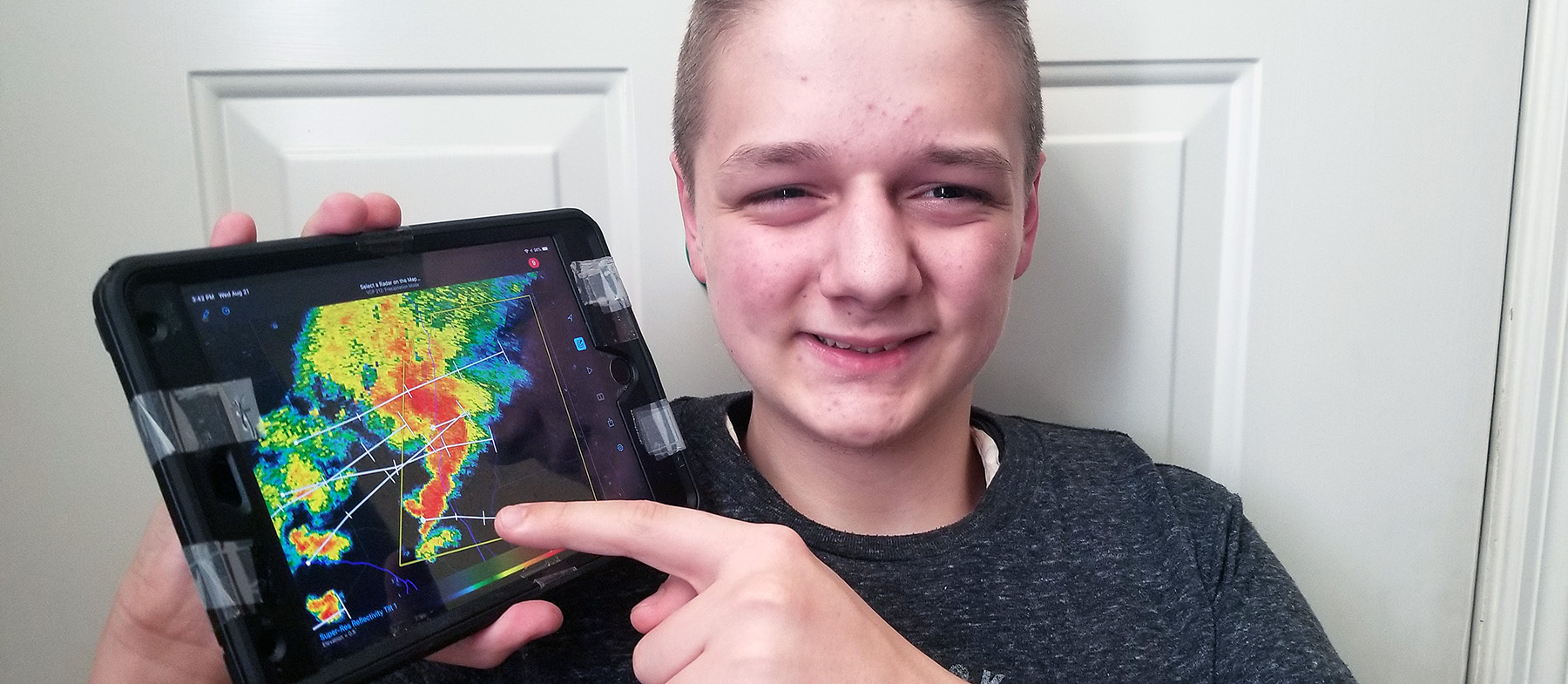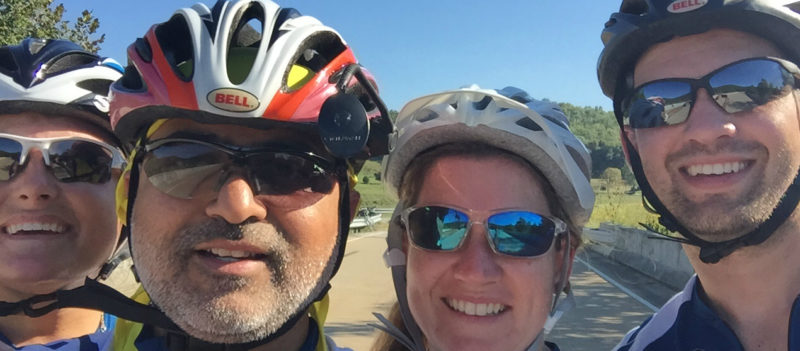When my husband and I made the decision to take our 3 year-old son, William, to the emergency department at Cincinnati Children’s on New Year’s Eve 2007, we had no idea how incredibly ill he was.
The diagnosis of hemophagocytic lymphohistiocytosis (HLH) just a few days after he was admitted that night, completely turned our lives on end.
You can read the story of William’s diagnosis, the months when we didn’t know what to expect and his life-saving bone marrow transplant (BMT) that was written shortly after he was discharged from the hospital after transplant.
Now, more than 6 years after his BMT, I’m happy to report that William is a healthy, active, thriving 10 year-old boy who is currently training in ski racing. But I’ll get to that.
For two-and-a-half years following William’s transplant we lived in Cincinnati and did our best to work back into a routine while closely monitoring blood work and William’s overall health. After his immune system recovered and he began receiving his childhood immunizations again, William started back to school. Those first days back at school were a test for our nerves, as it was the first time his new immune system was being tested. The doctors said, “Okay, let’s put him back in school to see what viruses he catches and how his immune system responds.” His first viral infection was rotavirus – it was a big test, but he passed it!
After that, our confidence in the stability of his health increased significantly and we started getting used to our new, post-HLH normal.
Then, in 2010, my husband and I began discussing the idea of moving our family to Puerto Rico for a business opportunity. At first, we questioned the idea of leaving our medical safety net. Plus, BMT recipients cannot ever sunburn because it can cause rejection, so moving to a tropical island wasn’t a perfect scenario. The first person we spoke to about the move was William’s Immunologist whose immediate response was, “Go, it will be the best thing for your family.” So, with the support of William’s medical team, we made an informed decision to make the move.
We’ve been in Puerto Rico since December 2010, and we have adjusted well and come to love living in the Caribbean. We have come to embrace the new culture, language, and lifestyle. We have found a fantastic local pediatrician who was willing to learn about HLH and to stay closely connected to our medical team in Cincinnati.
We also use a lot of sunscreen to protect William’s skin. When we first moved and were getting used to the intense sun so close to the equator, I was thoroughly applying sunscreen in the morning, then I would go to school to put it on him again at lunch-time, and then would apply again after school when the boys would swim or play outside. I was thinking about sunscreen almost constantly, but it was what I had to do to protect my son, so I did it diligently. I am proud to say that William’s classmates called him, “the whitest kid in Puerto Rico!”
It turns out I was a bit too diligent though because when we returned to Cincinnati a few months later for William’s annual check-up, his bloodwork showed that he was deficient in Vitamin D, meaning I’d been keeping him so covered, his skin wasn’t absorbing the important Vitamin D that the sun delivers. The doctors praised me for being an over-protective mom, but then told me I could calm down and allow him to get a little bit of sun. So, we backed off just a bit and have found the right routine to keep him safe from sunburns, while allowing him to absorb some nice, natural vitamin D.
Starting at a new school gave William and his brother, Charles, an opportunity to tell their new teachers and peers about HLH and the bone marrow transplant in their own time and their own way. Because Charles was the donor for William’s transplant, they have this story together that depicts Charles as a hero. But he has insisted from the beginning that he is not a hero, rather, his little brother deserves the credit because he’s the one who endured so much and fought hard to overcome HLH. Charles always shies away from the spotlight and does not enjoy talking about the experience. For the first six weeks in their new school the boys kept the transplant a secret, even from their teachers, allowing themselves to establish their identities without a medical history. For the first time in three years they were simply Charles and William, they were not ‘Charles and William, the brothers who did the transplant.’ In their own time and their own way, they told the people around them about what they’d been through and it has been a great way to allow them to own their story.
We’ve reflected a lot as a family about how grateful we are to still all be together and we started making bucket lists of things we want to do and see. Last year, we formulated another plan for travel that ultimately took us around the world checking off many items on each of our 4 family members’ bucket lists.
The boys have been homeschooled for the last couple of years, so this trip was School Around the World as their teacher traveled with us and had accompanying lessons for each of our stops along the way. The boys kept a blog while we traveled and you can read it at www.aroundtheworldwiththeflahertys.blogspot.com.
As we traveled for nearly three months and I watched my able, healthy son experience parts of the world he’s dreamed of seeing, I was profoundly grateful that he overcame HLH and that he is here with us 6 years later. Too many families who experience HLH aren’t as lucky as we have been.
We never could have known that first night in the emergency department that we were in exactly the right place for our son, but we were and the power of that will never be underappreciated. The healing process is long with a medical experience like HLH. First and foremost, we have to heal the kids and we will be forever in awe of the fact that the world’s foremost experts in HLH are at Cincinnati Children’s.
But after the child is healed, the healing must start for the parents – and in my experience, that process doesn’t start until well after the child is healthy. Most HLH parents emerge from treatment with post-traumatic stress disorder and they will need to work hard to manage the anxiety and the emotional and mental breakdown that is almost inevitably in their future. I am in contact with families who are also experiencing HLH and I make sure they always know that it will hit them sometime after transplant, it’s completely normal and they’ll get through it. The parents fall apart once it’s safe for them to do so, and that’s a good thing because it means the worst is behind them.
I have found strength in connecting with other HLH families, one of them being the Akin family, the inspirational people behind the Matthew and Andrew Akin Foundation. My husband, Dennis, and I have formed a strong friendship and partnership with Justin and Kristin in their efforts to raise awareness of HLH and raise money for the HLH Center of Excellence.
In October, Dennis will ride in the 700 Miles to Hope bike ride for the second year with Justin Akin. I love the bike ride and what it means for the parents of HLH kids to join together and with so many others who have been affected by HLH to do something meaningful, inspirational and therapeutic.
And shortly thereafter, the boys and I will head to Colorado where we will spend the winter on ski slopes as William and Charles both train in ski racing. Through several family vacations in Colorado, both of the boys developed an interest in racing and have truly excelled.
I am inspired by the passion that William is showing for this skiing discipline and I would support him even if he hadn’t lived through HLH, but given what I’ve seen of his fighting spirit, I’m betting that he’s going to give this every ounce of determination he has. And if one day he competes on a world stage, we’ll have a huge platform to spread HLH awareness!








Loved reading this, Ann! We miss you, but are glad everything has turned out so well for you and your beautiful family.